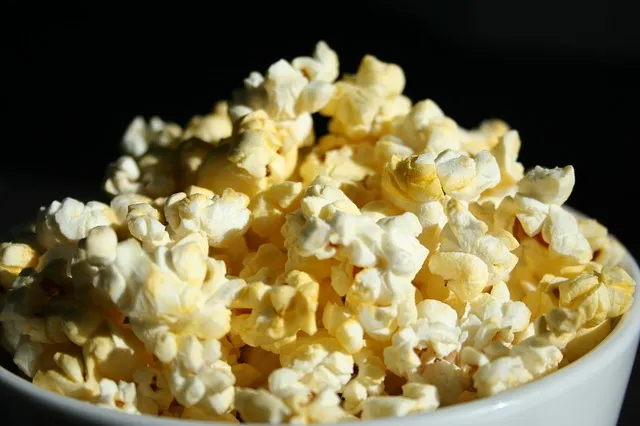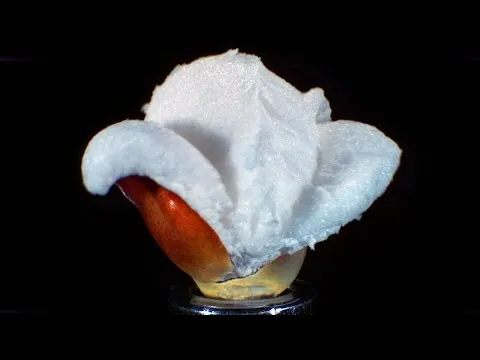In America, the holiday season is associated with all sorts of sweets – cookies, brownies, cupcakes, and more. But one salty, starchy snack is a consistent, if overlooked, member of this nosh pantheon: popcorn.
Indeed, popcorn is an American favorite. According to Popcorn.org, we consume about 13 billion quarts annually, or about 42 quarts a year for every single US resident. November and December represent some of the highest-volume months for popcorn sales.
But how do hard, dry grains explode into the crunchy munchie we love to chomp on?

As it turns out, the corn grain is chock-full of simple carbohydrates and a little bit of water. (For popping purposes, the ideal water content is about 13.5%.) As the hard corn is heated, the inner kernel turns into a hot, starchy soup. Because the kernel shell is strong, it refuses to burst even when the water inside reaches its normal boiling point (100°C). So the water simply keeps heating up until it is superheated.
Superheating occurs when a liquid is under pressure. The high pressure raises the liquid’s boiling point, so it remains a liquid even when it should convert to gas. (This is how pressure cookers work.) Inside the hot corn kernel, the pressure rises with the temperature, heating the interior water as high as 180°C – nearly twice the boiling point of water.
Eventually the pressure gets so high that the shell can’t hold. A crack opens, causing a few things happen very quickly. Some water contained in the shell rushes out of the kernel, shooting the kernel into the air. The shell continues to rupture, which releases the rest of the water. Because the pressure nosedives when the kernel falls apart, that super heated water instantly turns to gas. It escapes violently, spreading and hardening the leftover starches on its way out. Add a little salt and oil and you’ve got a very tasty snack on your hands!
Check out this super slow-mo video to see a visual of the previous paragraph – note all the STEEM being released from the exploding kernel!
One last tidbit: where does the popping sound come from? It’s not, as you might guess, the bursting of the kernel. It’s actually caused by the nearly instantaneous conversion of water into vapor which produces a pressure wave similar to how lightning creates thunder. Typically, the pop comes about 100 milliseconds after the kernel breaks!
Image credit: Shelburn at Pixabay.
Upvote and follow if you enjoyed, I love writing about science and will be doing a lot of it here!
